Managing budgets is an essential part of running a business. It allows you to measure your actual financial performance against the planned one. KIU manages its budgets using both General and Analytic Accounts.
We will use the following example to illustrate. We just started a project with ABC and we would like to budget the incomes and expenses of that project. We plan to have a revenue of VND100,000,000 and we don’t want to spend more than VND70,000,000.
→ Configuration
Go to Accounting module ‣ Configuration ‣ Settings and enable the Budget management feature
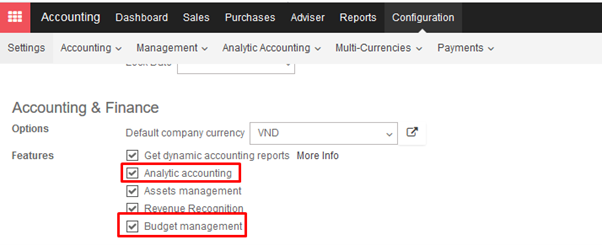
→ Budgetary Positions
Budgetary positions are the general accounts for which you want to keep budgets (typically expense or income accounts). They need to be defined so KIU can know it which accounts he needs to go get the budget information. Some might be already installed with your chart of accounts.
To define the positions enter the Accounting module ‣ Configuration ‣ Budgetary Positions.

For our example we need to define what accounts relates to our project’s expenses. Create a position and add items to select the accounts.
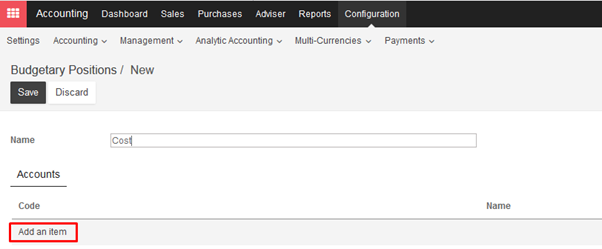
In this case we select the three relevant accounts used wherein we will book our expenses.
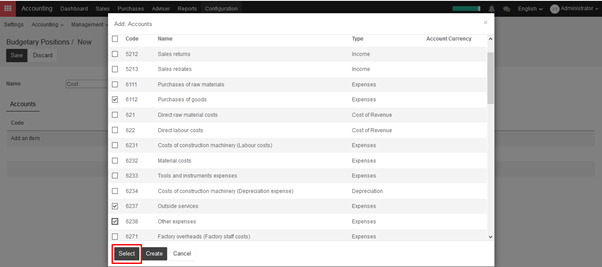
Click on Select.

Save the changes to confirm your Budgetary position.
Repeat this steps to create a revenue budgetary position. Only in this case select the relevant income accounts.
→ Analytical account
KIU needs to know which costs or expenses are relevant to a specified budget. To do so we need to link our invoices and expenses to a defined analytical account. Create an analytical account by entering the Accounting module and clicking Advisers ‣ Analytic Accounts ‣ Create ‣ Save. Create a new Account called ABC project and select the related partner.
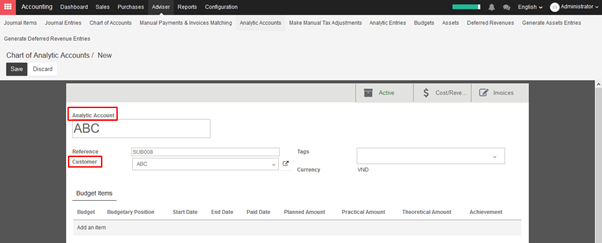
→ Set a budget
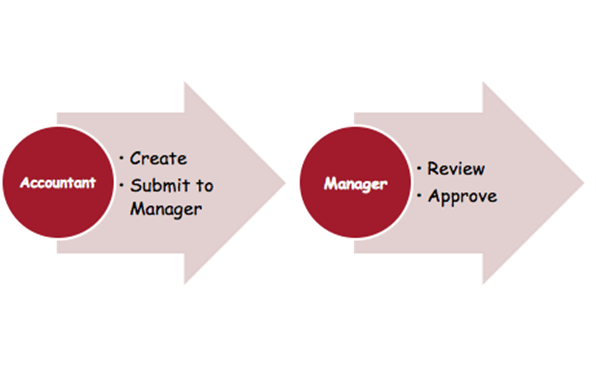
Let’s now set our targets for our budget. We specified that we expect to gain VND100,000,000 with this project and we would like not to spend more than VND70,000,000.
To set those targets, enter the accounting app, select Advisers ‣ Budgets and create a new Budget.
We have to give a name to the budget. In this case we’ll call it “ABC Project”. Select the period wherein the budget will be applicable. Next add an item to specify your targets in the Budget Line.

Select the Budgetary Position related to the Budget Line. In other words, select the position that points to the accounts you want to budget. In this case we will start with our VND70,000,000 maximum charge target. Select the “Cost” Budgetary Position and specify the Planned Amount. As we are recording a cost, we need to specify a negative amount. Finally, select the corresponding analytic account.

Click on Save & new to input the revenue budget. The Budgetary Position is Revenue and the Planned Amount is 1000. Save and close
You’ll need to Confirm and Approve the budget.
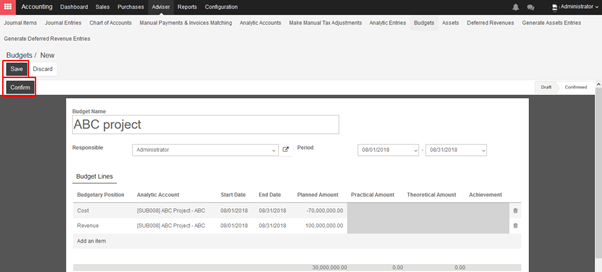
→ Check your budget
You can check your budget at any time. To see the evolution, let’s book some Invoices and Vendors Bills.
Go back in the budget list and find the ABC Project.
Via the analytical account, KIU can account the invoice lines and purchase lines booked in the accounts and will display them in the Practical Amount column.
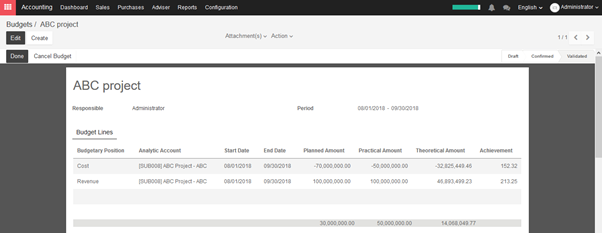
Note:
The theoretical amount represents the amount of money you theoretically could have spend / should have received in function of the date. When your budget is 1200 for 12 months (january to december), and today is 31 of january, the theoretical amount will be 100, since this is the actual amount that could have been realised.

